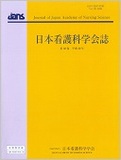Japanese
English
- 販売していません
- Abstract 文献概要
- 参考文献 Reference
要旨
目的:本研究は,認知症高齢者居宅事業所における研究者と施設職員によるアクションリサーチによって,認知症高齢者への漸進的筋弛緩法を継続実施した成果を明らかにすることを目的とした.
方法:研究者と施設職員によるミューチュアル・アプローチを使用した.研究者による施設職員へのインタビューと施設職員の実施状況のメモについて,帰納的に分析した.認知症高齢者の行動・心理症状(以下,BPSD)の調査データは,量的に分析した.
結果・結語:認知症高齢者に漸進的筋弛緩法を継続実施した成果は,施設職員が漸進的筋弛緩法を主体的に実施するようになったことであり,認知症高齢者のBPSDが減少したことであった.また,施設職員および認知症高齢者にとって漸進的筋弛緩法の実施が肯定的な意味を持つようになり,相乗効果として良い影響を及ぼしたと考える.
Purpose: The aim of this study was to clarify the outcomes associated with continued implementation of progressive muscle relaxation program in group homes and small multifunctional satellite home-care services.
Methods: The mutual collaborative approach was used by researchers and the facility staff. Facility staff interviews conducted by researchers and notes maintained by the facility staff pertaining to program implementation were inductively analyzed. Survey data on the behavioral and psychological symptoms of dementia (BPSD) in elderly residents were quantitatively analyzed.
Results and Conclusions: Group home and small-scale multifunctional facility staff began to conduct initiatives on their own following continuous implementation of the progressive muscle relaxation program. This program appeared to reduce BPSD among elderly residents with dementia. In addition, the program had a positive meaning and a possible synergistic effect on the facility staff and elderly residents with dementia.
Copyright © 2018, Japan Academy of Nursing Science. All rights reserved.


